
One of the most common questions I get from teachers, especially at the beginning of the school year, is: “What are your favorite place value activities?” One of my all-time favorites is a game called Digit Place.
I first came across this gem when I picked up one of my most valued teaching resources, Math Solutions’ Math Games book. It’s also featured in Mini Lessons for Math Practice (another fantastic resource!). While this game may not be what you initially expect when thinking of place value activities, I promise, you’ll see its value (pun intended!) the very first time you use it in your classroom.
Digit Place involves as much logic as it does place value understanding. In fact, this game creates endless opportunities for powerful math conversations. For years, I introduced Digit Place to my students on the very first day of school, and we continued playing it throughout the year.
It’s the perfect early finisher activity or a great way to fill those awkward few minutes before lunch or recess when you don’t have enough time to start something new. And believe me, your students will never get tired of this game!
How to Play Digit Place: The Basics
The game setup is simple: draw a 3-column T-chart on the board and label the columns “Guess,” “Digit,” and “Place.” Above the chart, list the digits 0 through 9.
I like to start by playing a few rounds with my students (students versus teacher) before letting them pair up and play on their own. Let me walk you through how I introduce this game to a class of third graders.
Introducing Digit Place to Students
I tell the class that I’m going to be the “keeper” of a number, and their job is to guess it. My number is a 3-digit number (though you can use a 2-digit number for younger students), and the digits don’t repeat.
Once I explain this, I ask students, “What numbers would be allowed in this game?” They start calling out, “432!” “925!” “821!” I then ask, “What numbers would not be allowed in this game, and why?” This gets them thinking more deeply about the rules. The students say, “45, because it’s only a 2-digit number” and “565, because the 5 repeats.”
Once I’m sure they understand the rules, I write my secret number (in this case, 436) on a small piece of paper so only I can see it.
A Step-by-Step Digit Place Example
I ask, “Who wants to take the first guess?” A student says, “123!” I write their guess in the “Guess” column. Then I explain, “One of the digits in your guess is in my number, so I’ll write ‘1’ in the ‘Digit’ column. But none of the digits are in the correct place, so I’ll write ‘0’ in the ‘Place’ column.”
I ask, “Who can explain what we know so far?” A student replies, “We know your number has a 1, 2, or 3 in it, but it’s not in the same place as in our guess.” I add, “Great thinking! Who wants to add on?”
Another student says, “If your number has a 1, it’s not in the hundreds place, and if it has a 2, it’s not in the tens place.” Already, they’re reinforcing their place value understanding.
Next, a student guesses “851.” I record it, writing 0 in both the Digit and Place columns, explaining that none of the digits in this guess are in my secret number.
Then I ask, “What helpful information did we learn from this guess?” A student answers, “We know your number doesn’t have an 8, 5, or 1, so we won’t guess those digits again.” I cross out the 8, 5, and 1 from the list of digits at the top of the game board.
The next guess is “734.” I record the guess, writing 2 in the Digit column (because my secret number has a 3 and a 4) and 1 in the Place column (because the 3 is in the tens place, but the 4 is not in the ones place).
I call on three more students to make guesses and record these on the game board.
At this point, I ask the students to turn and talk to a partner: What do they know about my number? What guess should they make next, and why?
Encouraging Logical Thinking
When I call the class back together, I say, “A lot of you want to guess my number. But remember, if you make a guess, you also need to explain why you’re choosing that number and how it will help us.”
A student says, “We want to guess 932 because we think your number has a 9 in the hundreds place and a 3 in the tens place.” I ask, “Why do you think that?” The student replies, “We know for sure there’s a 3 in the tens place, and from our last guesses, it seems your number has a 3 and either a 9 or a 6. We think it’s the 9.”
I record the guess. They’ve got one digit correct and in the right place! Excitement builds, hands shoot up, and there’s a chorus of “Oh! Oh’s!” throughout the classroom.
I let the students talk to their partners again to discuss what they know and what guess would be most helpful. After a quick discussion, I call on another student. “Okay”, she begins, “We know your number has to be something hundred thirty-six. Since we know there is no 9 in your number, we can cross it out.” I cross out the 9 on the chart and she continues.
“It can’t be a 0, 3, or 6 in the hundreds place, so we want to guess 436.” I see several students excitedly motioning “me too” in sign language (an essential routine in our classroom).
I write 436 on the chart and put a 3 in the Digit column and a 3 in the Place column. The students cheer. They have guessed my number!
“Wow!” I say, looking at the game board. “My number could have been almost any number between 100 and 999, and it only took you eight guesses to figure it out! That’s the power of logical and mathematical thinking!”
Why is Digit Place is So Powerful
You might be wondering why I’m so passionate about this game. Digit Place teaches logical reasoning, reinforces place value concepts, and encourages mathematical discussions. It challenges students to think critically and develop strategies; skills that are key in math learning.
The beauty of this game is that it can be easily modified for different grade levels. For younger students, use a 2-digit secret number. For students wanting a challenge, try a 4-digit number. Once students understand the game, they can play it with partners or in small groups, which promotes collaboration and communication.
One important rule: when students play against each other, they must write their secret number on a small piece of paper before the guessing begins. This ensures they don’t change the number midway through and helps them track information accurately on the game board.
Ready to Try It?
Does this sound like something you’d want to try with your students? I love this game because it gets kids excited about thinking logically and mathematically. It naturally incorporates place value language and encourages students to make connections between place value and logic. Plus, it’s easy to use throughout the school year, whether for practice, as a warm-up, or as a go-to filler activity.
I’ve included the simple instructions below to help you introduce Digit Place to your classroom. Trust me, once you see how engaged your students are, you’ll find yourself coming back to this game again and again!
How to Play Digit Place:
Materials:
- Paper
- Pencil
Directions:
- Set up the recording sheet by drawing a three-column chart, the columns labeled Guess, Digit, and Place. Above the chart, list all digits, 0-9.
- Decide who will be the keeper of the number and who will be the guesser of the number.
- The keeper of the number thinks of a three-digit number (or two-digit number) and writes it down on a small piece of paper so only they can see it. The digits in the number cannot repeat.
- The guesser makes a guess at the number. The guess is recorded by the keeper in the first column of the recording sheet.
- The keeper also records how many digits are correct in the Digits column and how many of those digits are in the correct place in the Place column.
- Repeat steps 4 and 5 until the number is guessed. The guesser can cross out eliminated digits on the top of the game board as they’re guessing.
- Switch roles so that a different player now chooses the secret number.
I hope you and your students enjoy Digit Place as much as we do in our classroom. Happy math gaming!
For more activities and ideas for place value, check out our entire PLACE VALUE category! It’s filled with lots of engaging ways to bring place value concepts into your classroom!

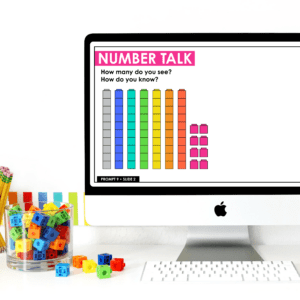
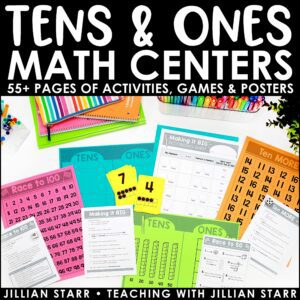
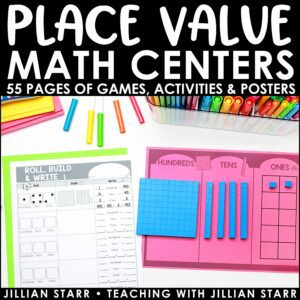
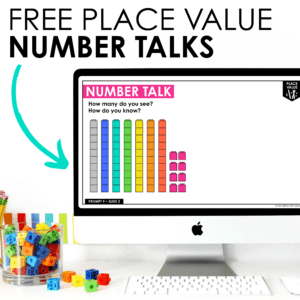

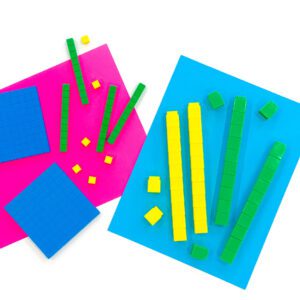
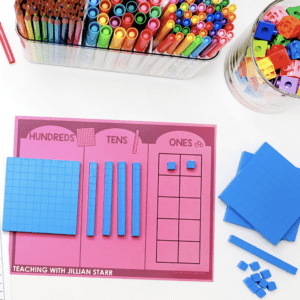
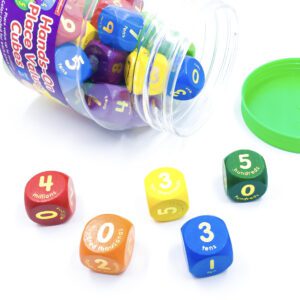


Leave a Comment